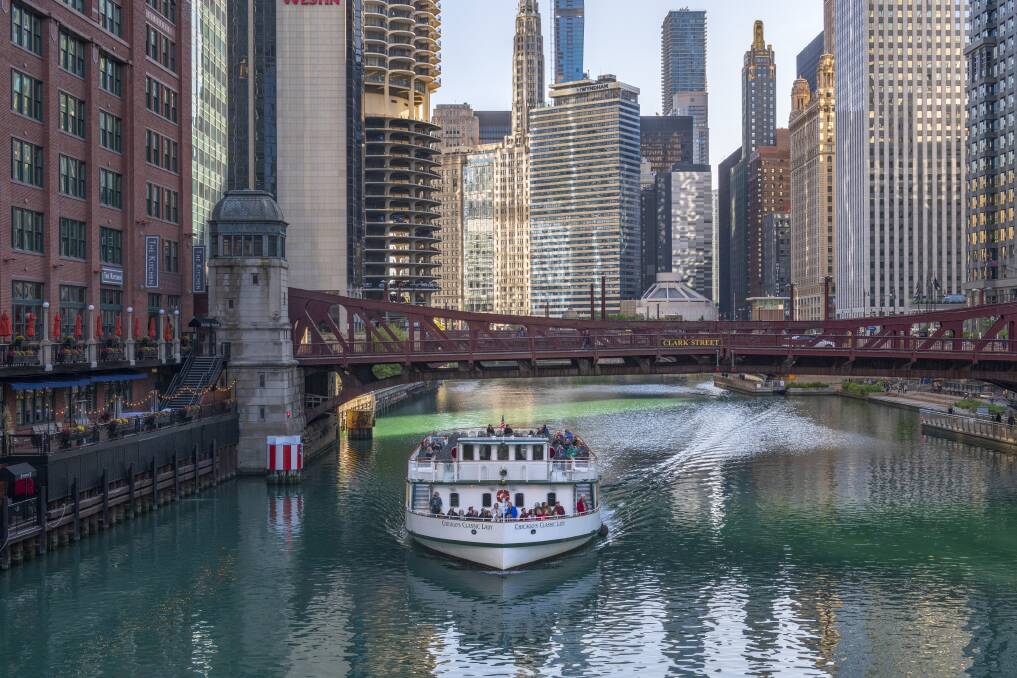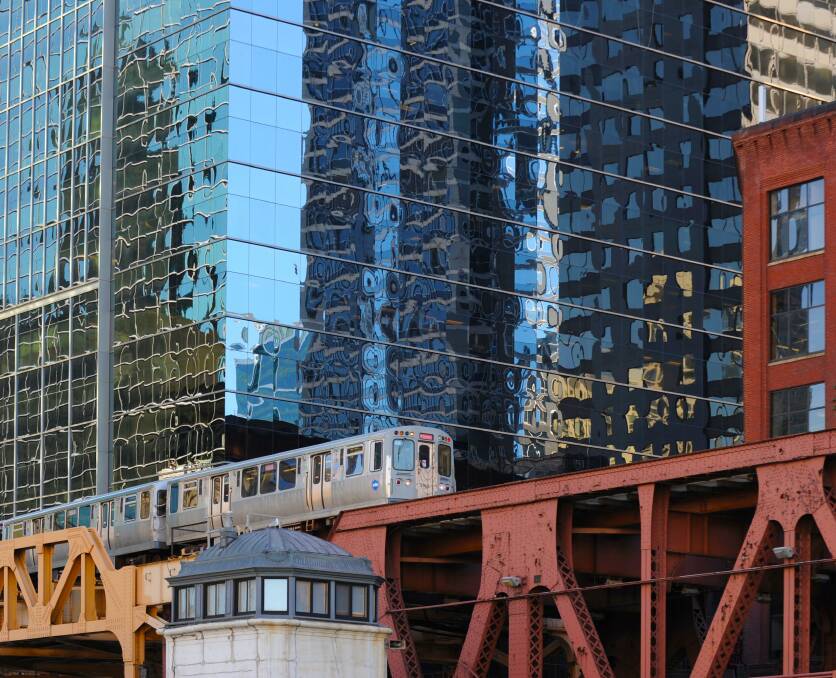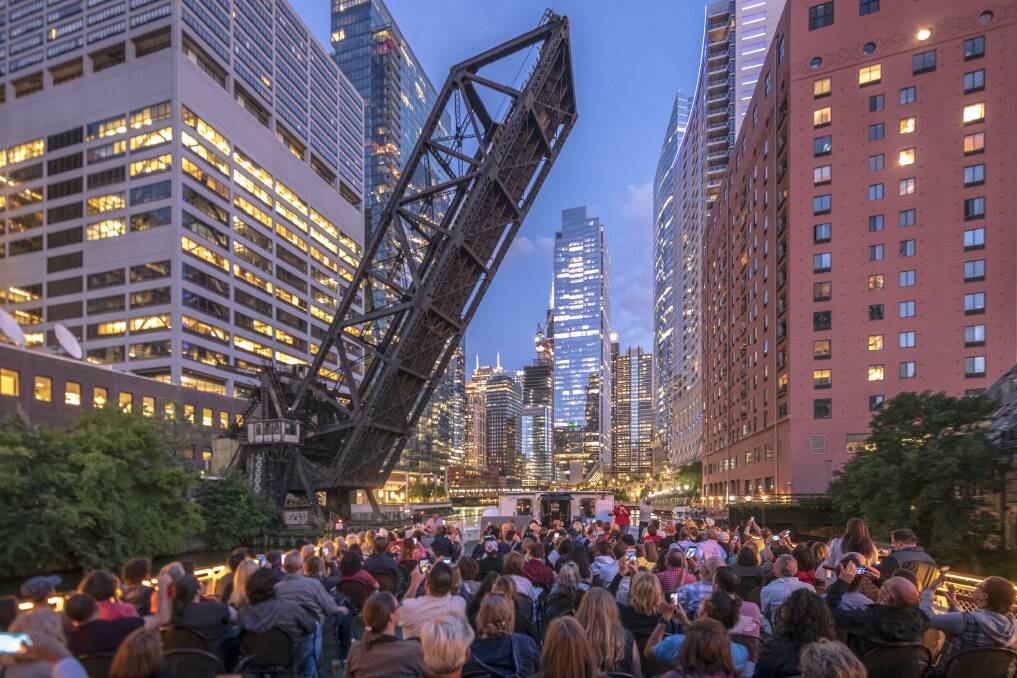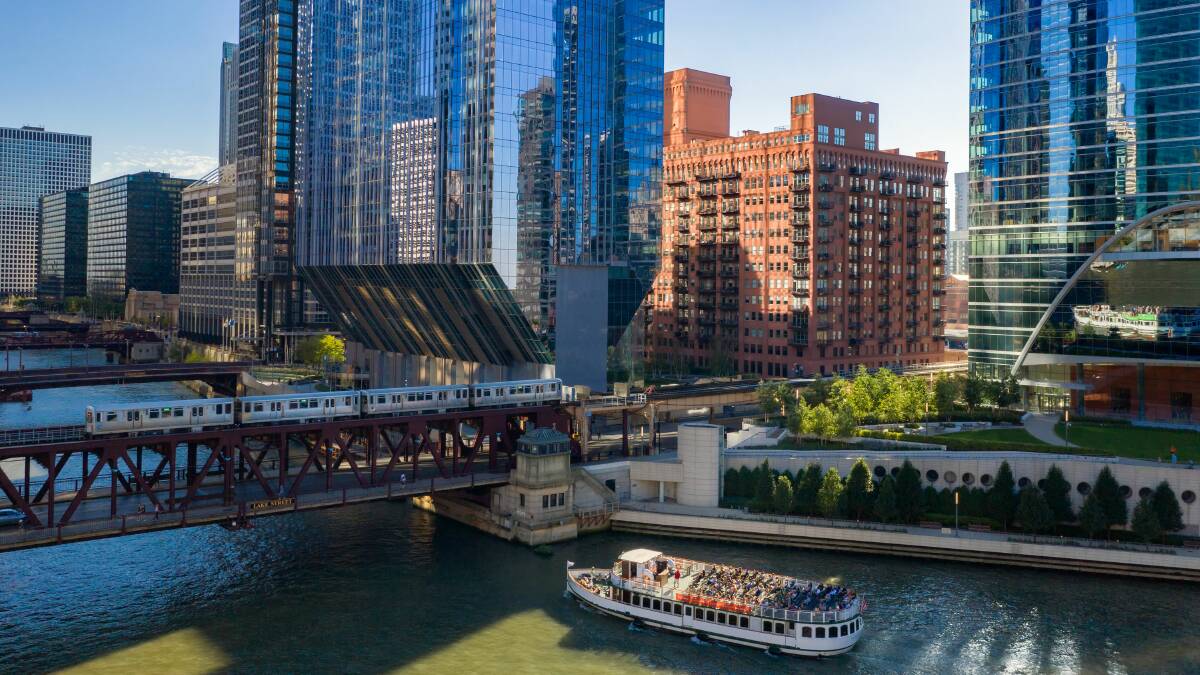Take the train, or catch a boat: there's more than one way to get up close to Chicago's famous tall buildings.
Create a free account to read this article
$0/
(min cost $0)
or signup to continue reading
I'm going to throw architectural styles at you in rapid succession," says Ron, our friendly guide to Chicago's famous architecture. And he does: pointing out modern glass and steel towers, a classic commercial building decorated with terracotta tiles and a grand public building, the Harold Washington Library. This last structure is the most impressive, with striking elements such as high brick-framed arches and ornamental owls.

What makes this walking tour particularly engaging is our vantage point: for our small group is standing on the platform of Harold Washington Library-State/Van Buren Station, on Chicago's famous elevated railway known as the "L". Being high off the ground we're up close to the facades of the city's buildings, without anything blocking our view. This is the cleverest aspect of the Chicago Architecture Center's (CAC) Elevated Architecture tour - it combines two Chicago icons in one fun package. Groups are small and allowance is made for crowded train carriages via headphones; even when we're split up on a train, Ron can speak his commentary into our ears via a discreet microphone.
Walking from the CAC's central museum to Washington/Wabash Station as trains trundled above our heads, Ron first runs us through the history of public transport in the Loop, Chicago's downtown zone. Ascending to the station platform, we admire the nearby Little Jewellers Building, one of the decorative commercial structures that sprouted after the Great Chicago Fire of 1871.
What do you need when you're a hustle-bustle boom town? Tall buildings, of course!
There are eight lines in the "L" system, and a Pink line train takes us to the library station. After marvelling at the library and a number of other nearby buildings, including a federal prison whose narrow slit windows make it resemble an old-school computer card, we hop aboard another train to alight at Quincy Station.
Puzzlingly, the station seems to have changed little since it was opened in 1897. The platform is laid with timber boards, there are iron pillars holding up the canopy and the ticket office has a pressed-tin ceiling. There are even old-school advertisements for lakeside getaways. It turns out there's a good reason for all this nostalgia; as Ron explains, the station was reconverted to its 19th-century splendour in the 1980s, as part of a bid to have the entire railway heritage-listed.

Despite this classic look, there's plenty of modernity we can see from its platform - including the Willis Tower, once the tallest in the world, which Ron describes as a collection of "bundled tubes" resembling pencils stacked together.
Back on a train, we head to Clinton Station, from where we spot a former railway powerhouse before changing platforms and viewing the modern network control centre with a high environmental rating and a roof garden. On our final ride back into the Loop, we have a great view of the confluence of the north and south branches of the Chicago River. It's been a fun experience, and possibly worth a revisit. "I never give the same tour twice," confirms Ron, "As we're so reliant on the quirks of the train system."
From rails to water
A few hours later, I'm waiting at Dock 3 for a different kind of architecture tour: CAC's River Cruise aboard Chicago's First Lady. On this excursion passengers sit in chairs aboard the broad deck of a pleasure boat as it cruises along the Chicago River, with a guide delivering commentary via speakers.
I had my doubts about viewing buildings from this angle, but they're immediately dispelled as we set sail. Right ahead of us is the magnificent Wrigley Building, opened in the 1920s as a gleaming example of Chicago's architectural ambitions. And it's not the only soaring structure I can see from my seat, on this clear sunny day.

"What do you need when you're a hustle-bustle boom town?" asks guide Marc, referring to Chicago in the 19th century. "Tall buildings, of course! So before long, the city became an architectural playground."
Marc underlines his point by gesturing to a 2017 building housing an Apple Store, with a thin roof made of carbon fibre. Next to it is a 1945 building, a modernist structure that resembles a glass and steel box.
Marc refers to the Wrigley Building as "the house that chewing gum built", and describes a nearby Beaux-Arts structure as "having a conversation" with its neighbour. I like this perspective - we're invited to see individual buildings as part of an overall picture, not as isolated elements. It's food for thought as we move serenely along the river, leaning back in our chairs to take in the passing parade.

There's plenty more to see over the following 90 minutes, including examples of "adaptive reuse" in which former industrial buildings have been reworked to house residents. There's also innovation - a tall building sitting on a narrow Y-shaped base - as well as classic style, symbolised by the Civic Opera House which looms over the waterway. Not to mention the eyebrow-shaped windows on 1980s housing complex River City, and the graceful 1935 Chicago Tribune Tower, created via a competition to design the world's most beautiful building.
The cruise includes a visit to Lake Michigan, from where we can see the city's soaring skyline framed against the shore and the setting sun beyond. It seems the perfect combination of architecture and nature, and the high point of a memorable tour.
Read more on Explore:
TRIP NOTES
Getting there: Air Canada connects to Chicago via Vancouver, see aircanada.com. Chicago can also be reached by Amtrak trains from many US cities, see amtrak.com
Staying there: Canopy by Hilton Chicago Central Loop inhabits a historic railway office building, with retro decor and a fun lobby bar, see hilton.com
Touring there: CAC's L-train tour costs $US30 ($47), and its river cruise starts from $US54. Book via architecture.org/tours
The writer travelled courtesy of Brand USA and Choose Chicago.
Pictures: Chicago Architecture Center.




